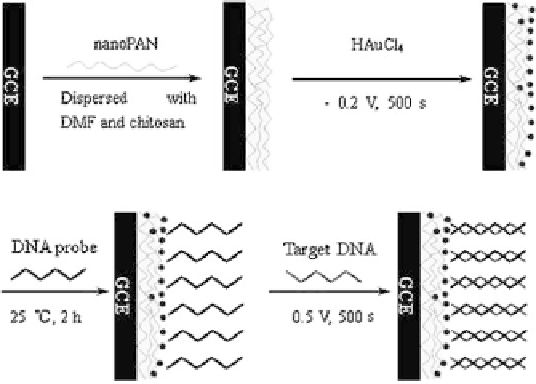Biology Reference
In-Depth Information
be used to produce gold nanoparticles on planar gold electrodes
and was combined with a redox-active intercalating label to
create a DNA electrochemical biosensor [7]. The electrochemical
response of an immobilized long sequence single-stranded DNA
probe was monitored after target hybridization and measured by
cyclic voltammetry using methylene blue (MB) as an electroactive
indicator. It was shown that the immobilization of probe DNA onto
the nanogold aggregates (compared to the planar substrate) led
to a higher sensitivity and lower detection limit due to increasing
the number of probe molecules and improving molecular orien-
tation which increased the accessibility of target strands for DNA
hybridization.
Polyaniline is an attractive electropolymerizable polymer for
surface modifications due to its unique redox properties, high elec-
tricalconductance,andeaseofpreparation.Inaddition,polyaniline-
modified surfaces retain a large specific surface area and can
remain conductive facilitating subsequent electron transfer. Feng
and coworkers [8] constructed a DNA impedance biosensor based
on gold nanoparticle/polyaniline nanotube membranes formed in
the presence of chitosan as shown in Fig. 14.1. Chitosan was used
Figure 14.1.
Schematic diagram of the immobilization and hybridization
of DNA on Au/nanoPAN/GCE.









